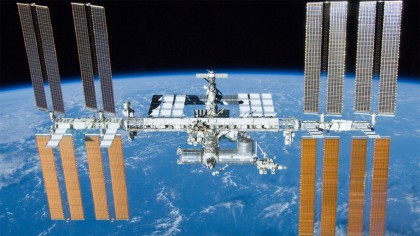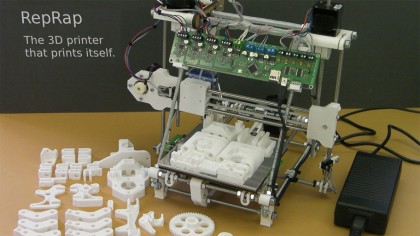The Universe of Things is coming and it's set to supercharge 3D printing
Could the Universe of Things change world trade?
We're quickly moving to a new age of consumerism where digital products are replacing physical products. If 3D printers are popularised there could be a shift in world trade; instead of finished products, we'll all want increasingly diverse 'inks'.
"With open hardware and intelligent robotics, 3D printers have completely changed the way we manufacture and could see huge global supply chains coming to an end," says Neil Dutta, managing director at Cartridge Discount.
"3D printing machines can also print from almost any material and this is transforming many fields, including engineering, education, archaeology, bio-printing and even food printing."

It could even mean downloading dinner directly from the Universe of Things. "World trade could be reduced to mere raw materials," says Curran, who points at bio-printing – where food is literally printed dot by dot and layer by layer.
"There could be a 3D printer in every kitchen," he says.
However, the price of inks could delay or prevent any seismic shift. "While the prices of 3D printers are steadily dropping as the amount of people buying them increases, the printer ink is still extremely costly," he says.
There are no signs of these rates dropping, with Dutta noting that: "The high prices could hold back the 3D printing revolution."
Sign up for breaking news, reviews, opinion, top tech deals, and more.
Though he believes that 3D printing will become mainstream technology, Shields notes that, "The industry will not be able to keep up with the levels of mass production global supply chains demand of manufacturers – products such as knives, forks and cups will still be bought in the traditional way because it's easier and less time consuming than 3D printing."
The Universe of Things in space
Last year a European Space Agency project with Foster+Partners explored how a base could be constructed on the Moon using the dust there and robot-operated 3D printers.
Meanwhile, NASA is helping a start-up called Made In Space develop a zero-gravity 3D printer that could be emailed designs for spare parts for the International Space Station. However, before it can make the trip it needs to be able to print spare parts for itself in case it too is ever in need of repair.

And if it can do that, there's no reason why it can't replicate itself; the Universe of Things is a self-perpetuating loop.
The replicating 3D printer
That's also the thinking behind the RepRap project, which started the open-source 3D printer movement a decade ago. RepRap's killer app is self-replication.
"There are now about a dozen major RepRap designs out there, scores of companies based on the RepRap project all over the World, and tens of thousands of RepRap machines," says Dr Adrian Bowyer, who created the RepRap. Best guesses lie between 50,000 and 100,000.

RepRap could even bring down capitalism according to The Guardian. Bowyer explains that markets are based on scarcity, something that RepRap threatens.
"If you let everyone have a self-replicating RepRap that can make many goods for which there is currently a market, then those markets must become attenuated, at least," he says.
Bowyer also added that the self-replicating nature of RepRap means that anyone who has one can give another to their friend, explaining: "The idea of making goods in a factory might become as dead as the idea of reading news from folded sheets of printed paper."

Jamie is a freelance tech, travel and space journalist based in the UK. He’s been writing regularly for Techradar since it was launched in 2008 and also writes regularly for Forbes, The Telegraph, the South China Morning Post, Sky & Telescope and the Sky At Night magazine as well as other Future titles T3, Digital Camera World, All About Space and Space.com. He also edits two of his own websites, TravGear.com and WhenIsTheNextEclipse.com that reflect his obsession with travel gear and solar eclipse travel. He is the author of A Stargazing Program For Beginners (Springer, 2015),